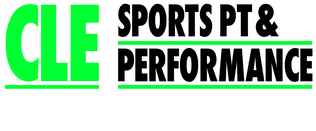Getting better mentally and physically means challenging your body through your fitness routine. However, there’s a delicate balance between how far to push and when to take a break. At this time of year, it seems we spend lots of time beating ourselves up over poor health choices during the holidays (Skipping workouts for holiday parties? The endless trays of Christmas cookies? Or the Christmas Ales? ). As soon as January starts, we rush into a new workout program, hoping to make up for lost time. Recovery days (“I’ve had enough of those in December”) are the last thing on anyone’s mind – me included. But after spending the past week limping down the steps each morning after intense yoga, circuit training, and spinning classes, I’ve realized their importance. Every day, the morning stairs felt worse. The workout classes became less enjoyable too. I was staggering (literally) towards an injury and burnout. Luckily, I avoided both thanks to a well-timed active recovery day and a better organized workout plan. Learn how to do the same before your fitness goals get sidelined.
Rest vs Recovery
There’s a difference between rest and recovery. Your body needs both:
Rest is sleep and time spent not exercising, training, or exerting yourself (this also means not performing yard work, walking the dogs, or taking down holiday decorations).
Recovery is actions taken to repair your body after a workout .
Is active recovery really that important?
In a word- yes.
A study in the Journal of Sports Science and Medicine compared active and passive recovery on heart rate, perceived exertion, and lactate concentration in recreational climbers. The active recovery session produced a lower overall heart rate than passive. Lactate concentration and rate of perceived exertion was also much lower in climbers using active recovery protocols.
What exactly is active recovery?
For years, high-level athletes have searched for the ideal way to recover between competitions and training sessions. Recently, the buzzword “active recovery” became used in the general population. However, true active recovery is more than foam rolling and drinking a protein shake.
How do I “do” active recovery?
Try one of these ideas for a recovery workout:
1. Drop the intensity of your cardio– do just enough to get muscles and blood moving. This helps reduce residual fatigue in the muscle. Examples: slow jogging or cycling for 50-75% of your average mileage for the week at 60-70% of full effort- an “easy” pace.
2. Crosstraining
3. Restorative yoga– Otherwise known as “Yin” yoga, a routine that focuses on mindfulness to center your breath and body
4. Mobility WOD- Started by Physical Therapist Kelly Starrett and popular within the CrossFit Community, Mobility WOD is a way to keep up your body between tough workouts
5. Recovery at home– Try this workout courtesy of Shape Magazine
For specific techniques geared towards your body and its recovery needs, contact CLE Sports PT & Performance below for a free 15-minute phone consult.
Remember that active recovery involves taking a physical and mental break from training. Don’t overlook the mental break- it’s important to combat burnout.
Organizing a workout plan:
Effective training plans use periodization, or cycling parts of a training program throughout the year. But the concept concept is quite complicated and could be a separate blog post in itself. So without getting too technical, remember that intense workouts every day are counterproductive– even if the workouts are different activities (Remember my example above with intense yoga, spinning, and circuit training on consecutive days?)
The easiest advice:
Choose 1-2 workouts each week and “make ‘em count.” Push yourself. Space these workouts out between lower intensity days and active recovery days. Throw a rest day in there too. The goal is to keep moving and stay active between sweat sessions but not to burn yourself out.
You should look forward to the high intensity days. If you start dreading them- it’s time to take a break. Don’t get too attached to your schedule. If you’re feeling beat before the workout even starts, do something else! A broken down body needs time to rebuild. Training when you are tired accomplishes nothing other than an injury
The challenge is truly listening to your body. Years ago, a yoga instructor taught me when to push and when to respect the myself, and how to feel the difference. I’ve spent my career tweaking others’ training regimes, but never took the time to slow my own routine down. Her words made all the difference “Give your body what it needs. that’s the challenge.”
If your nagging pain doesn’t go away is preventing you from finishing a workout, it might need medical attention. Contact an expert at CLE Sports PT & Performance for a free, 15-minute phone consult. Or, find out how to stay active with individualized tips to stay on track of your goals

